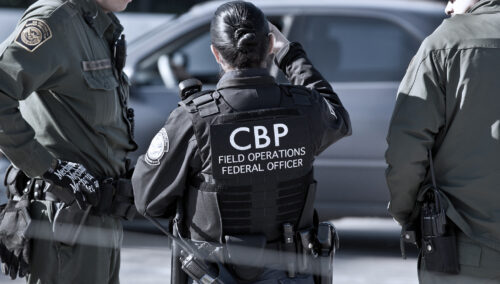This week, the Senate will consider amendments to the Emergency Supplemental Appropriations Bill that would add thousands of additional personnel along the border (including the National Guard), as well as provide millions of dollars for detention beds, technology, and resources. Yesterday, bowing to pressure, President Obama announced that he would send 1,200 National Guard troops to the border and request $500 million for additional resources. All of this attention on resources for the border ignores the fact that border enforcement alone is not going to resolve the underlying problems with our broken immigration system.
For more than two decades, the U.S. government has tried without success to stamp out unauthorized immigration through enforcement efforts at the border and in the interior of the country, but without fundamentally reforming the broken immigration system that spurs unauthorized immigration in the first place. While billions upon billions of dollars have been poured into enforcement, the number of unauthorized immigrants in the United States has increased dramatically.
Spending on Immigration Enforcement Continues to Rise
- The annual budget of the U.S. Border Patrol stood at $3.0 billion in Fiscal Year (FY) 2009—a nine-fold increase since FY 1992 {Figure 1}. The number of Border Patrol agents stationed along the southwest border with Mexico grew to 16,974 in FY 2009—a nearly five-fold increase since FY 1992 {Figure 2}.[i]
- The combined budgets of U.S. Customs and Border Protection (CBP), the parent agency of the Border Patrol within the Department of Homeland Security (DHS), and U.S. Immigration and Customs Enforcement (ICE), the DHS interior-enforcement counterpart to CBP, grew from $9.1 billion in FY 2003 to $17.2 billion in FY 2010 {Figure 3}.[ii]
■ CBP’s budget increased from $5.9 billion to $11.4 billion.[iii]
■ ICE’s budget increased from $3.3 billion to $5.7 billion.[iv]
Despite Increased Enforcement Spending, Unauthorized Immigration Continues
- At the same time the U.S. government has attempted to use employer sanctions and border enforcement to stop unauthorized immigration, the unauthorized-immigrant population of the United States has tripled in size, from roughly 3.5 million in 1990 to 11.9 million in 2008 {Figure 4}.[v]
- The Pew Hispanic Center estimates that between 25 percent and 40 percent of all unauthorized immigrants do not sneak across the border, but come to the United States on valid visas and then stay after their visas expire.[vi]
- A research team led by Wayne Cornelius, Director of the Center for Comparative Immigration Studies at the University of California, San Diego, has found that while unauthorized migrants from Mexico may be caught on their first attempt at crossing the border, they have an almost 100 percent chance of eventual success—particularly if they enlist the services of a coyote, or people smuggler.[vii]
- U.S. immigration-enforcement efforts, particularly those implemented along the border, are now accomplishing the exact opposite of what they were supposed to achieve:
- Immigrants who in the past might have returned home to build a house or start a business after a few years of work in the United States are settling permanently and bringing their families with them.
- Human smuggling is a booming business that now rivals drug trafficking in profitability.
- More immigrants are dying while attempting to cross into the United States through increasingly isolated and treacherous terrain.[viii]
[i] Data provided to the author by U.S. Border Patrol Headquarters, Office of Public Affairs, April 26, 2010 and September 25, 2009.
[ii] U.S. Department of Homeland Security, Budget-in-Brief for Fiscal Years 2005 (p. 13), 2006 (p. 15), 2007 (p. 17), 2008 (p. 19), 2009 (p. 19), 2010 (p. 19), and 2011 (p. 17).
[iii] Ibid.
[iv] Ibid.
[v] Jeffrey S. Passel and D’Vera Cohn, A Portrait of Unauthorized Immigrants in the United States (Washington, DC: Pew Hispanic Center, April 14, 2009), p. 1; U.S. Immigration and Naturalization Service, Estimates of the Unauthorized Immigrant Population Residing in the United States: 1990 to 2000, January 31, 2003, p. 10.
[vi] Jeffrey S. Passel, The Size and Characteristics of the Unauthorized Migrant Population in the U.S., March 7, 2006), p. 16.
[vii] Wayne A. Cornelius, et al., Controlling Unauthorized Immigration From Mexico: The Failure of “Prevention through Deterrence” and the Need for Comprehensive Reform (Washington, DC: Immigration Policy Center, American Immigration Law Foundation, June 10, 2008, p. 34.
[viii] See Wayne Cornelius and the Mexican Migration Field Research and Training Program, Center for Comparative Immigration Studies, University of California, San Diego, Controlling Unauthorized Immigration from Mexico: The Failure of “Prevention through Deterrence” and the Need for Comprehensive Reform, June 10, 2008.



